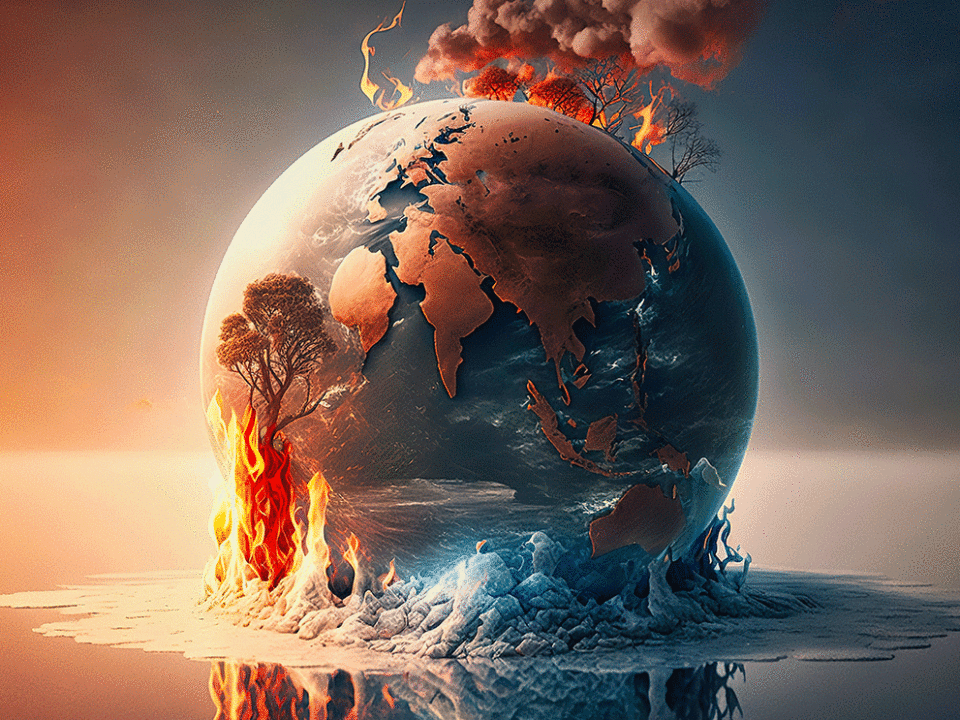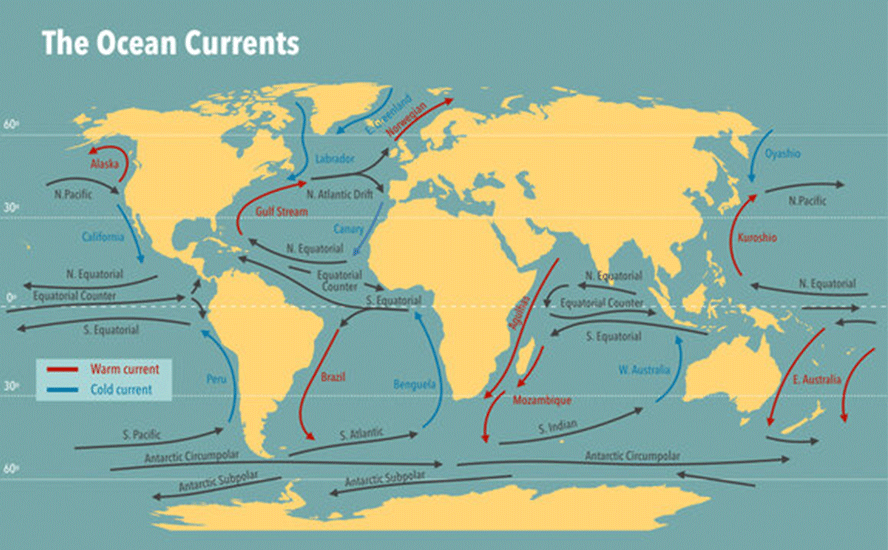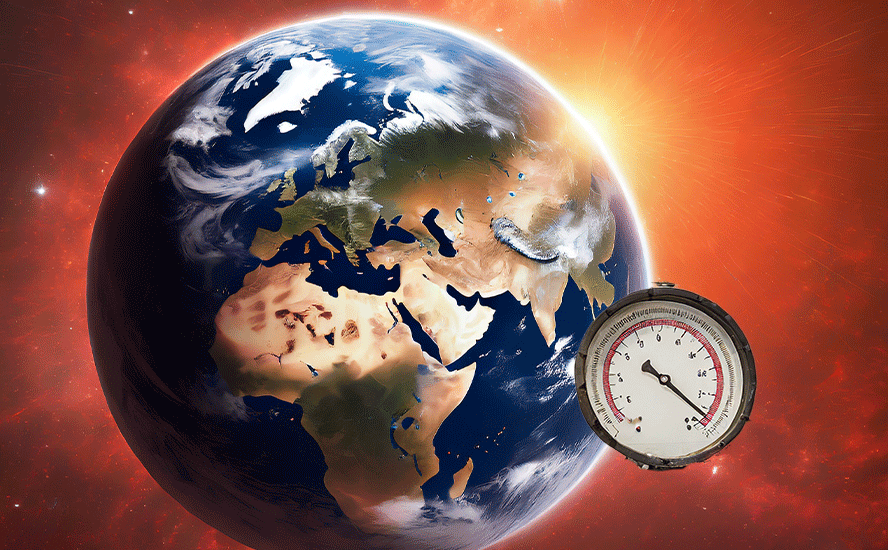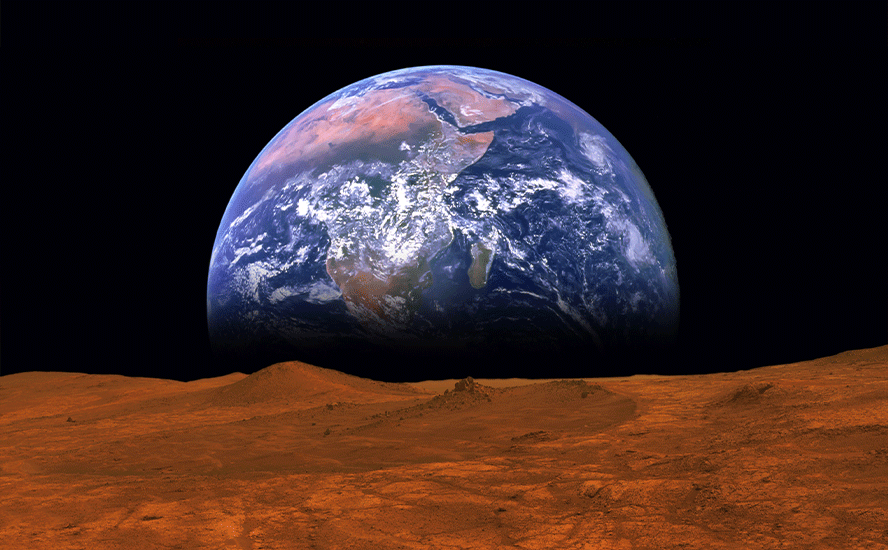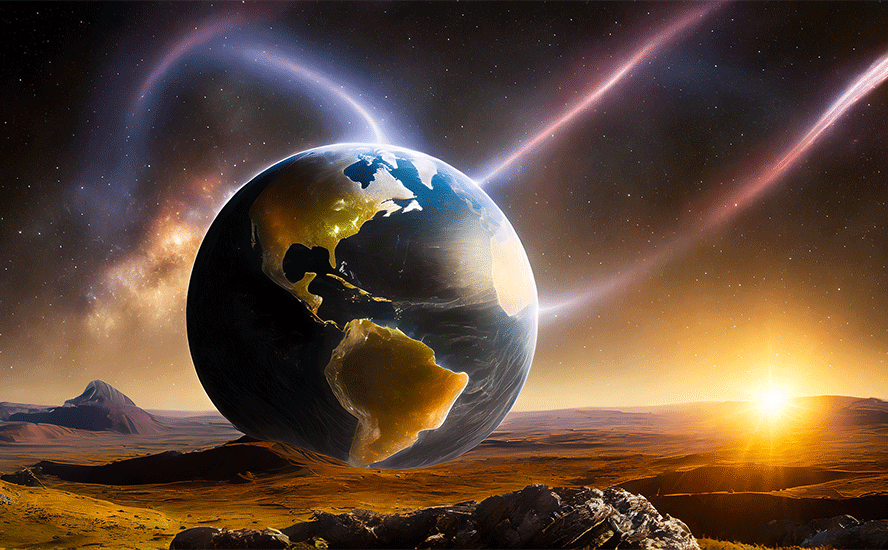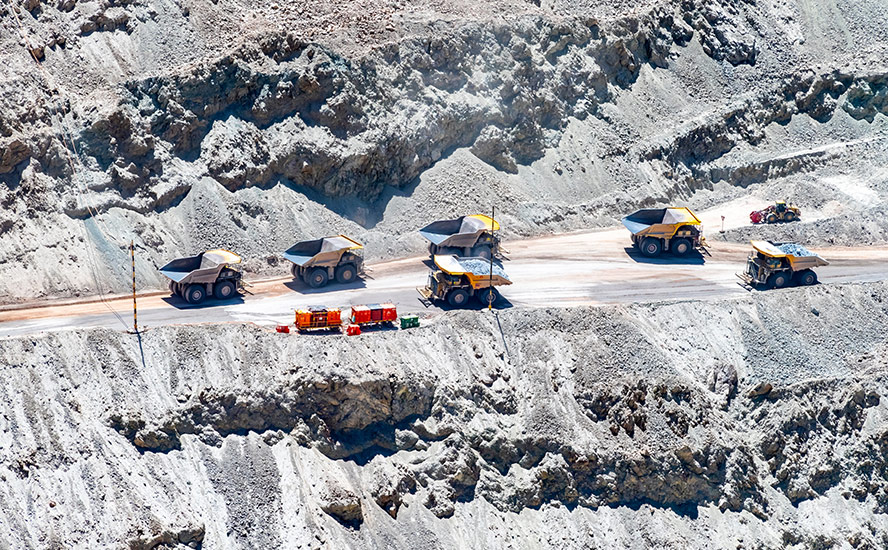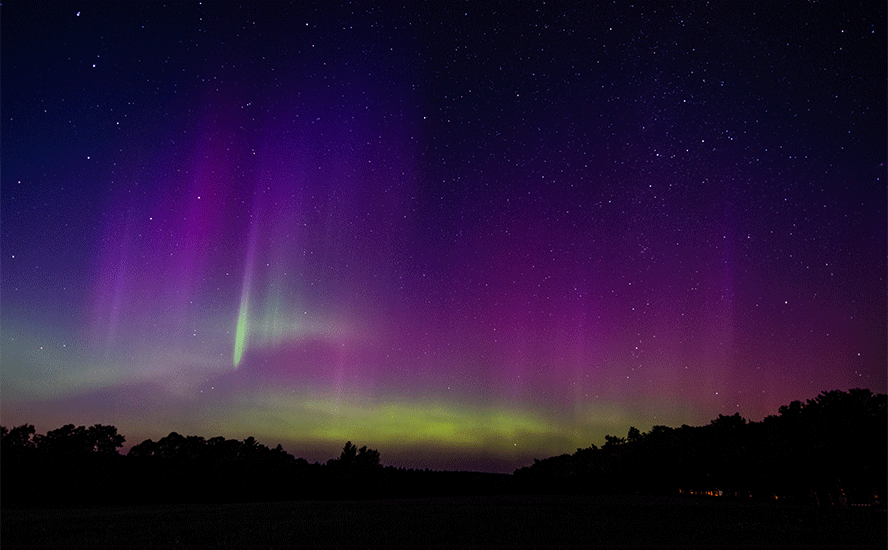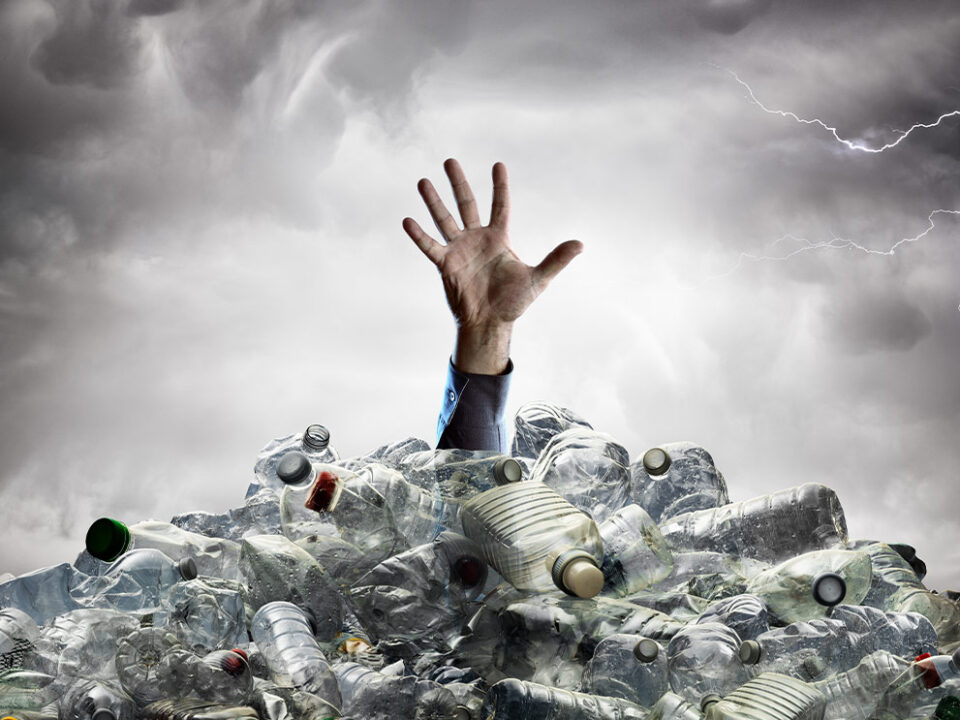Saving the planet with clean and green

2020.06.26
Lockdowns and reduced industrial activity aimed at reducing the spread of the covid-19 pandemic have resulted in cleaner skies in several cities known for their air pollution.
In April, IQAir studied the air quality of 10 major cities that, along with normally experiencing heavy air pollution, had implemented a three-week covid lockdown.
The study showed up to 60% reductions of particulate matter (PM) compared to the same period in 2019, with New Delhi showing the most improvement (60%). Seoul had 54% less PM, and there were drops of 31% in Los Angeles and 25% in New York City. Seven out of the 10 cities studied saw significant improvements in air quality.
On May 21, CBC reported major Canadian cities also saw drastic improvements in air quality during lockdowns in March and April. In Toronto and Montreal, fewer cars on the road and closed or limited factory output resulted in nitrogen dioxide levels falling more than 30%. The drop was even higher in Calgary and Edmonton, around 40%.
However, the brief hiatus hasn’t stopped the Earth from breaking records this month showing a continued rise in temperatures and heat-trapping carbon emissions.
Fact is, global warming doesn’t care about the coronavirus.
In May, the Mauna Loa Observatory in Hawaii hit a record 417 parts per million carbon dioxide. While the reading is only 3 ppm higher than May of 2019, scientists say it is likely the highest concentration seen on Earth in 3 million years!
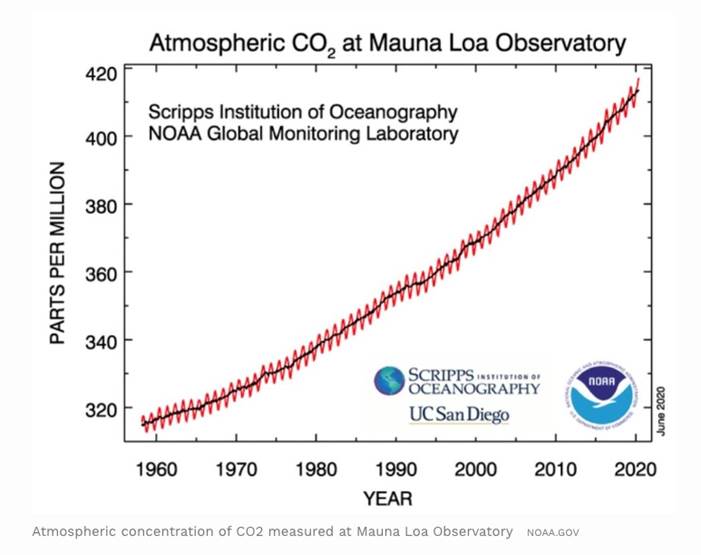
According to Forbes, atmospheric scientists estimate it would take a 20-30% reduction in emissions for six months to a year, to see a drop of carbon concentrations.
And while there is little we can do to prevent temperatures from rising past the tipping point of 2 degrees C that scientists say will cause irreversible damage to Mother Earth, we can do our part in cleaning up the atmosphere by reducing our fossil fuel usage.
Arctic heatwave
The small Siberian town of Verkhoyansk is one of the coldest places on Earth, with the mercury plunging to -50 degrees Celsius in winter. Last Saturday, a prolonged Arctic heatwave recorded a sizzling 38 degrees C.
That is 18 degrees higher than the town’s average maximum daily temperature in June, and well beyond the extreme heat and cold that is sometimes felt in Eastern Siberia.
Over the past 30 years, the Arctic has warmed more than any other region on Earth – by 3.1 degrees from October to May.
Currently the region is literally on fire.
Close to Verkhoyansk, over 275,000 hectares of forest are burning. On Wednesday, geography professor at the London School of Economics who has been studying fires in the region said “Over the past few days, we’re already seeing very unusual fire activity at very high latitude.” He noted over the last 18 months, fires in the Arctic Circle have emitted more carbon dioxide than in the past 16 years put together.
The fires are of particular concern in regions engulfed by huge forest fires last year, where the European Union’s Copernicus climate monitoring network warned that “zombie” fires smouldering underground could be re-igniting.
Across the Arctic, average temperatures soared around 10 degrees above normal in March, April and May. According to the BBC, Earlier in June, parts of Siberia recorded 30C, while in May, Khatanga in Russia – situated in the Arctic Circle at 72 degrees north – set a new May temperature record of 25.4C.
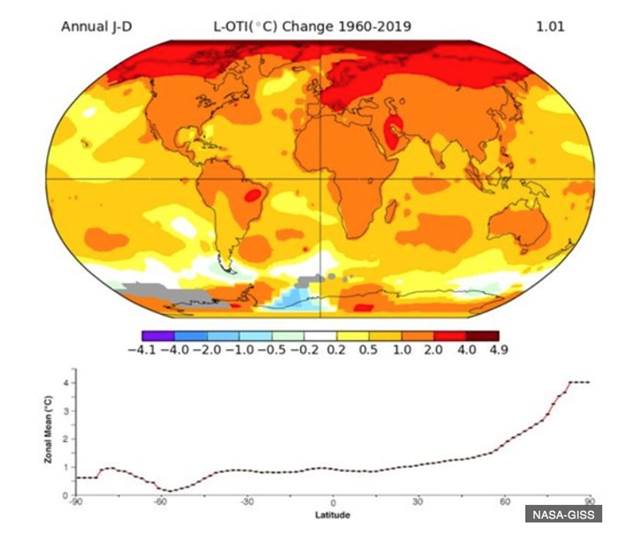
Along with the threat of wildfires, the extreme Arctic heat risks melting the permafrost, freeing vast quantities of trapped methane, a powerful greenhouse gas.
One-fifth of Arctic permafrost is now vulnerable to global warming, according to a University of Guelph biologist, whose research was published in ‘Nature’, a scientific journal.
The higher temperatures may also result in higher rates of glacial melt in places like Greenland and Iceland, and reduce free-floating polar ice coverage, leading to a dangerous climate “feedback loop”.
NASA states that feedback loops may double the amount of warming caused by carbon dioxide alone. For example, the disappearance of snow and ice at the poles exposes dark ocean to sunlight, warming the oceans. When ice covers the poles, the sunlight is reflected back to the atmosphere, keeping the oceans cool. As the planet keeps warming, more ice disappears, exposing more water, further raising ocean temperatures, and sea levels.
Europe is also heating up, suggesting a repeat of last summer, when records were blasted through in France (45C), Germany, Poland and the Czech Republic. Unseasonably hot weather this week saw Heathrow Airport reach a 2020 high of 32.6. As temperatures climbed into the low 30s on Thursday in Paris, Brussels and London, normally mild Wales was poised to smash a 2000 record of 33.7, warmer than the holiday island of Ibiza, Spain.
Climate change – human and natural
Some of our readers skeptical of climate science will be heartened to read that at Ahead of the Herd, we don’t believe global warming is man-made.
Increased greenhouse gases from the industrial era are only partly to blame. There is actually very strong science to indicate global temperature increases are down to climate cycles that don’t change for thousands of years. It’s a valid argument to say that anthropogenic emissions have sped up what was already happening naturally.
If you listen to mainstream media, climate change has only one antecedent: human-caused emissions of carbon dioxide and other gases (methane, water vapor, nitrous oxide) that have been spewing into the skies since the Industrial Revolution; these greenhouse gases have trapped heat within the lower atmosphere. While human-caused pollution is certainly degrading our soil, water and air, this theory does not take into account the natural cycles of cooling and warming that have driven climate change for billions of years.
Milankovitch’s Theory states that as the Earth travels through space around the sun, cyclical variations of three elements combine to produce variations in the amount of solar energy that reaches us. These three elements are:
- Variations in the Earth’s orbital eccentricity – the shape of the orbit around the sun, a 100,000-year cycle.
- Changes in obliquity or tilt of the earth’s axis – changes in the angle that Earth’s axis makes with the plane of Earth’s orbit, a 41,000-year cycle.
- Precession – the change in the direction of the Earth’s axis of rotation, a 19,000 to 23,000-year cycle.
These orbital processes are thought to be the most significant drivers of ice ages and, when combined, are known as Milankovitch Cycles. The last ice age, the Glacial Maximum, occurred between 27,000 and 24,000 years ago. But we know from geological records – studies of Danish and Swedish bogs and lakes, for example – that as the Earth has warmed and cooled over the centuries, the warmer periods are getting longer and the colder periods shorter. In order words, spread out over an extremely long time sequence, the Earth is gradually getting hotter even as it warms and cools in cycles.
Climate is also affected by changes occurring within the sun, thus shifting the intensity of sunlight that reaches the Earth’s surface. These changes in intensity can cause either warming – stronger solar intensity – or cooling when solar intensity is weaker.
Whatever the causes of climate change, its effects are obvious, and getting worse.
The planet is warming, affecting our weather, our oceans, our growing seasons, even our food, as crops fail, causing shortages and price hikes. Storms are becoming more frequent, and more intense, and droughts are lasting longer. Forest fires are an annual occurrence in Australia, California, British Columbia, and now, even the Arctic. In the United States and the Caribbean, people live in fear of the next hurricane that could literally turn their lives upside down. Most of us have watched videos of calving glaciers as huge chunks of ice break off millions-year-old ice sheets and tumble into the sea.
Is global warming a temporary phenomenon that we can stop through government policies in partnership with industry, like carbon taxes and cap and trade schemes? Unfortunately the truth is that climate change is more like a runaway train that is just reaching the crest of a hill, before it begins to accelerate, at break-neck speed. It is unstoppable. The Earth will warm until it starts cooling. The proof is in the geological record. All we can do is try to manage the effects as best we can.
Green infrastructure
The way we see it, there are two ways to do that: number one, drastically reduce our output of carbon emissions by switching from fossil-fueled power generation to renewable energies (solar, wind), while continuing to electrify the global transportation system, including trains, cars, trucks, delivery vans and construction equipment.
Second, we need to fortify our cities against frequent storm surges, and rising sea levels. This includes building seawalls, storm breaks and other infrastructure that can help absorb excess water, and prevent saltwater intrusion, which is what happens when coastal aquifers become contaminated with seawater. Climate change mitigation also involves developing water management plans for drought-stressed regions, especially where agriculture depends on fresh water supplies at risk of depletion; and reducing greenhouse gas emissions in cities.
New York City, for example, in 2019 passed legislation that puts caps on carbon emissions for buildings over 25,000 feet, forcing them to slash emissions 40% by 2030.
According to a demographer at Florida State University, by 2100, 13 million Americans will need to move because their homes are in the sea’s way. The re-location will cost the government $1 million each. The sums needed are both unfathomable and unsustainable, considering that Florida is just one state likely to be underwater by then. Buyouts have already begun from homeowners living in Staten Island, Houston and New Orleans. New Jersey, North Carolina and much of Texas are also at high risk.
River was risin’ high
Look-a here boys around Leland tell me,
River was raisin’ high
Boy, it’s risin’ over there, yeah
I’m gonna move to
Greenville
Fore I leave, goodbye
Look-a here the water now, Lordy,
Levee
Broke, rose most everywhere
The water at Greenville and Leland,
Lord, it done rose…
Joe Bonamassa, High Water Everywhere
Climate Central, a non-advocate climate change research group, says that increases in ocean levels are locked in, meaning they can’t be changed. Its business-as-usual scenario has temperatures rising 4 degrees C. If that were to happen, in 100 years the seas will rise 8.9 meters (29 feet), flooding some of the largest cities in the world containing up to three-quarters of a billion people (460-760 million). They include New York, Shanghai, Hong Kong, Mumbai, Jakarta, Hanoi, Tokyo, Osaka and Rio de Janeiro.
Among the US cities likely to be submerged by 2100 are New Orleans, Miami, Houston, Atlantic City and most of Charleston, South Carolina.

Some cities have recognized the problem and are putting money aside for flood mitigation, such as building seawalls and bulking up levees. A few examples:
- In Boston, it’s estimated to cost $2.4 billion to protect the city and its many low-lying neighborhoods from flooding. A harbor barrier that would’ve cost $6-12 billion has been abandoned as too expensive. The city is currently looking at shore-based solutions that buffer against high tides and storm surges, and using parks and wetlands to absorb a 40-inch rise in sea levels.
- Eight years ago, Superstorm Sandy flooded Long Island City, Queens. The Hunter’s Point South Waterfront Park, created in 2017, was converted from a landfill to a fortification against rising seas. The “The Big U” project would create and connect 10 miles of parks, barriers and flood walls around low low-lying areas. Fourth Regional Plan calls for housing buyouts in flood-prone communities; creating a network of water supply systems between Long Island, New York and New Jersey; phasing out New Jersey’s Meadowlands industrial area; flood-proofing or relocating power plants; and phasing out Teterboro Airport in Hackensack, New Jersey.
- The Virginia state legislature passed the Virginia Shoreline Resiliency Fund in 2016, but has yet to fund the program. Good luck asking the cities. Norfolk VA, where streets regularly flood, is a billion dollars in debt.
- In Harris County, Texas, which includes Houston, voters reeling from Hurricane Harvey approved a $2.5 million flood protection bond. It’s estimated that $30 billion is needed to fortify the 2,500 miles of streams and man-made channels, just to handle a 100-year rainfall.
- The sea level in Florida, the most at-risk state, has risen up to 8 inches higher than it was in 1950; it now rises one inch every three years. Flood mitigation here is more complicated than elsewhere because the bedrock is porous limestone. This allows groundwater to flow up, from below ground, and sea water to seep under sea walls. Protecting Florida from immersion would cost $72 billion.
An extremely large infrastructure program led by the United States, which needs to spend around $2 trillion to close its “infrastructure gap”, could help to ameliorate the economic impacts of covid-19, which continues to ravage dozens of countries, and US states that reopened too soon.
We believe a significant part of a global infrastructure build-out should be “green”. There is an undeniable need to move away from energy sources powered by fossil fuels, and replace them with renewable hydro, wind and solar. A key part of the program should support vehicle electrification, since the transportation sector is such a large contributor to carbon emissions.
We like presumptive Democratic nominee Joe Biden’s $1.7 trillion clean energy plan and his $1.3 trillion program for infrastructure improvement.
If elected president, Biden promises a $1.7 trillion climate policy to roll back greenhouse gas emissions, and a $1.3 trillion infrastructure improvement plan. His “Clean Energy Revolution” calls for installation of 500,000 electric vehicle charging stations by 2030, and would provide $400 billion for R&D in clean technology.
Key to Biden’s $1.3 trillion infrastructure improvement plan is a $50 billion investment in repairs to roads and bridges; $10 billion for transit construction; a doubling of infrastructure grants, and more funding for the US Army Corps of Engineers.
The Trump administration is said to be preparing a nearly $1 trillion infrastructure proposal – some of the dollars are geared toward 5G/ broadband – as a way of spurring the world’s largest economy back to life. House Democrats have weighed in with a $1.5 trillion infrastructure bill of their own.
A global green infrastructure spending push would mean a lot more metals will need to be mined. Two big copper drivers are the global 5G buildout and electric vehicles – including cars, trucks, vans, construction equipment and trains.
Even though 5G is wireless, its deployment involves a lot more fiber and copper cable to connect equipment. 5G, and Solar power, are set to become a major new drivers of silver demand.
Conclusion
Climate change is hugely disruptive but it doesn’t have to be all negative. Done right, a clean and green infrastructure build-out on a global scale could supercharge an ailing world economy, put thousands of people back to work, and fortify cities vulnerable to flooding, all while putting countries on a path to a cleaner future – a future involving green energy and transportation options requiring billions of tonnes of metals.
Richard (Rick) Mills
subscribe to my free newsletter
aheadoftheherd.com
Ahead of the Herd Twitter
Legal Notice / Disclaimer
Ahead of the Herd newsletter, aheadoftheherd.com, hereafter known as AOTH.
Please read the entire Disclaimer carefully before you use this website or read the newsletter. If you do not agree to all the AOTH/Richard Mills Disclaimer, do not access/read this website/newsletter/article, or any of its pages. By reading/using this AOTH/Richard Mills website/newsletter/article, and whether or not you actually read this Disclaimer, you are deemed to have accepted it.
Any AOTH/Richard Mills document is not, and should not be, construed as an offer to sell or the solicitation of an offer to purchase or subscribe for any investment.
AOTH/Richard Mills has based this document on information obtained from sources he believes to be reliable but which has not been independently verified. AOTH/Richard Mills makes no guarantee, representation or warranty and accepts no responsibility or liability as to its accuracy or completeness. Expressions of opinion are those of AOTH/Richard Mills only and are subject to change without notice. AOTH/Richard Mills assumes no warranty, liability or guarantee for the current relevance, correctness or completeness of any information provided within this Report and will not be held liable for the consequence of reliance upon any opinion or statement contained herein or any omission. Furthermore, AOTH/Richard Mills assumes no liability for any direct or indirect loss or damage or, in particular, for lost profit, which you may incur as a result of the use and existence of the information provided within this AOTH/Richard Mills Report.
AOTH/Richard Mills is not a registered broker/financial advisor and does not hold any licenses. These are solely personal thoughts and opinions about finance and/or investments – no information posted on this site is to be considered investment advice or a recommendation to do anything involving finance or money aside from performing your own due diligence and consulting with your personal registered broker/financial advisor. You agree that by reading AOTH/Richard Mills articles, you are acting at your OWN RISK. In no event should AOTH/Richard Mills liable for any direct or indirect trading losses caused by any information contained in AOTH/Richard Mills articles. Information in AOTH/Richard Mills articles is not an offer to sell or a solicitation of an offer to buy any security. AOTH/Richard Mills is not suggesting the transacting of any financial instruments but does suggest consulting your own registered broker/financial advisor with regards to any such transactions
Legal Notice / Disclaimer
Ahead of the Herd newsletter, aheadoftheherd.com, hereafter known as AOTH.Please read the entire Disclaimer carefully before you use this website or read the newsletter. If you do not agree to all the AOTH/Richard Mills Disclaimer, do not access/read this website/newsletter/article, or any of its pages. By reading/using this AOTH/Richard Mills website/newsletter/article, and whether you actually read this Disclaimer, you are deemed to have accepted it.





